Deep Woods vs. Fields for Turkeys
- From T&TH Forum
Where would you go?

Most folks pick the deep woods. Here’s my answer:
Let me go against the grain here. I have a plot that is a mix of fields and woods. While I have hunted the deep woods and the fields about equally, I have to say my best success has been on the edge of things– where fields and woods mix. Let me describe some of my best venues and you’ll see what I mean:
#1: The Honey Hole: An old dead oak in treeline along road out of use for 80 years. The road follows the top of a narrow N/S ridge. The treeline is about 10 yards wide between two narrow pastures. The turkeys roost on both sides of the ridge. Honey hole overlooks the ends of two narrow pastures, the entrance of the old road into the woods, the entrance of the road into a disused pasture reverting to cedar thicket, and a steep sided pasture that the turkeys use to sun themselves on cold days.
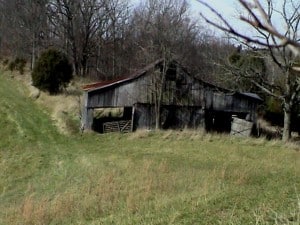
Broken Corners from Gobblers Knob
#2 Broken Corners: This is actually a complex of hunting venues. The major feature is a saddle along an E/W ridge running between camp and a place called Gobbler’s Knob. At the center of the saddle is an old barn overlooking a small food plot and an exposed hillside that is a late morning-to-late-afternoon strut zone. At the top of the hill called Gobbler’s Knob is a loafing area. After it warms up a little the birds like to dust themselves inside the barn. All told, there are probably 10 good setups within 200 yards of the barn.
#3 Garbage Pit: There is a small sinkhole where the previous owners put trash. To the south is a finger ridge . To the north is an open pasture with a small island of blackberries. To the West is the end of a narrow pasture. A small oak/hickory grove sits at the point.
#4 Campground: A big oak grove with the family campground at the center. The old road mentioned in #1 meets another abandoned track The one old road crosses a saddle formed by two small hollows cutting into a knife-edge ridge. The other road runs down the edge of a pasture on one side and down the edge of a ravine on the other. Turkey are in and out of the campground from just after flydown to late in the day.
The point here is that most of our best hunting is where something meets something meets something running along something. A bunch of things come together and that’s where the turkeys are. Usually it’s woods meeting open field with something like a fence line, or a protected end of a pasture or a fence line or an old road thrown in for good measure. You can usually measure the success of our spots by counting the number of things that intersect. Yes, I and the others have taken turkeys in the middle of the woods, but the natural tendency of the turkeys seems to be to naturally go towards these meeting of things.
One other thing about field edges vs. deep woods worth remembering: If you are down-sun from a turkey out in a field and you are behind a moderate amount of cover, that turkey cannot see past the bright sunlit grass or bushes into the deep shadow behind. A turkey’s eye construction just can’t do it. When you’re up-sun from the turkey, he may be able to pick out your silhouette, but he has to have his eyes in the shade before that becomes a factor. In the woods, where the lighting is more even, the turkey has a distinct advantage over being able to pick you out.
Now I have been accused of being an ambusher, which some folks claim is a dastardly low form of turkey hunter. I have to admit that I rely less on calling than location, but I still do a fair amount of conservative calling. The point is that after a decade of being with these birds I pretty well know where they are going to roost, loaf, feed, etc. All I have to do is be in one of the better places at the right time and most of the work gets done for me. I don’t have to call as much. I can stay well back from the roost, because I know there is a good chance, they will be by my way sooner or later.
This post has already been read 1083 times!
Views: 9


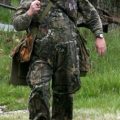


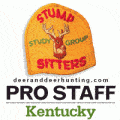
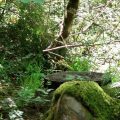
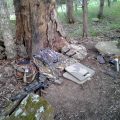
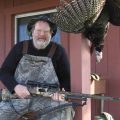

In turkey hunting either/or is not the choice I like to make. I look for transition zones. This would be some area in between the deep woods and field edge. It’s where a gobbler would patrol so that he could find a hen in the field or further in the woods.